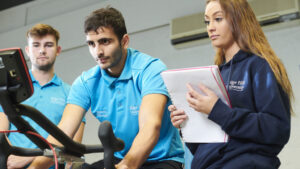
Empowering Parents: A Comprehensive Guide to Child First Aid
Parenthood brings immense joy, but it also comes with a responsibility to ensure the safety and well-being of your little ones. Being prepared for emergencies is a crucial aspect of parenting. In this guide, we’ll delve into essential first aid skills every parent should possess to confidently handle child emergencies.
First aid policies establish guidelines for responding to emergencies. They outline procedures, designate responsibilities, and ensure a prompt and effective response to injuries or health crises in various settings.
Recognizing Signs of Distress
1. Respiratory Distress:
- Understand normal breathing patterns in children. Rapid or labored breathing, wheezing, or signs of choking are red flags that require immediate attention.
2. Allergic Reactions:
- Be aware of common allergens and recognize signs of an allergic reaction, such as hives, swelling, difficulty breathing, or anaphylaxis.
3. Burns and Scalds:
- Know the appropriate response to burns and scalds. Run cool water over the affected area for at least 10 minutes and cover with a clean, dry cloth.
4. Choking:
- Learn the Heimlich maneuver for choking incidents in children. Be familiar with age-appropriate techniques as they differ for infants, toddlers, and older children.
Basic First Aid Techniques
1. CPR (Cardiopulmonary Resuscitation):
- Acquire CPR certification, especially tailored for infants and children. This life-saving skill can be crucial in emergencies involving cardiac arrest.
2. Wound Care:
- Clean cuts and scrapes with mild soap and water. Use an antiseptic ointment and cover with a sterile bandage. Seek medical attention for deep or infected wounds.
3. Fractures and Sprains:
- Learn how to immobilize a limb and apply a splint. Understand the difference between a fracture and a sprain and seek professional medical help accordingly.
4. Fever Management:
- Know age-appropriate fever-reducing techniques. Use acetaminophen or ibuprofen as recommended by your pediatrician and maintain proper hydration.
Creating a Child-Friendly First Aid Kit
1. Pediatric Medications:
- Keep child-friendly pain relievers, fever reducers, and any prescribed medications in the first aid kit.
2. Bandages and Dressings:
- Ensure an assortment of bandages, gauze, adhesive tape, and antiseptic wipes for wound care.
3. Thermometer:
- A reliable digital thermometer is essential for monitoring your child’s temperature accurately.
4. Emergency Contact Information:
- Include a list of emergency contacts, including your pediatrician, poison control, and local emergency services.
Knowing When to Seek Professional Help
While parents can address many minor injuries, recognizing when professional help is necessary is crucial. Seek medical attention if:
- Your child has difficulty breathing.
- Severe bleeding occurs that doesn’t stop with applied pressure.
- There is loss of consciousness, a head injury, or suspected broken bones.
Conclusion
Being a prepared and informed parent is a gift you give to your child. By acquiring these essential first aid skills, you not only ensure a swift and confident response in emergencies but also contribute to a safer environment for your family. Parenthood is a journey filled with adventures, and with the right skills, you can navigate it with the assurance that you are well-equipped to handle the unexpected twists along the way.




